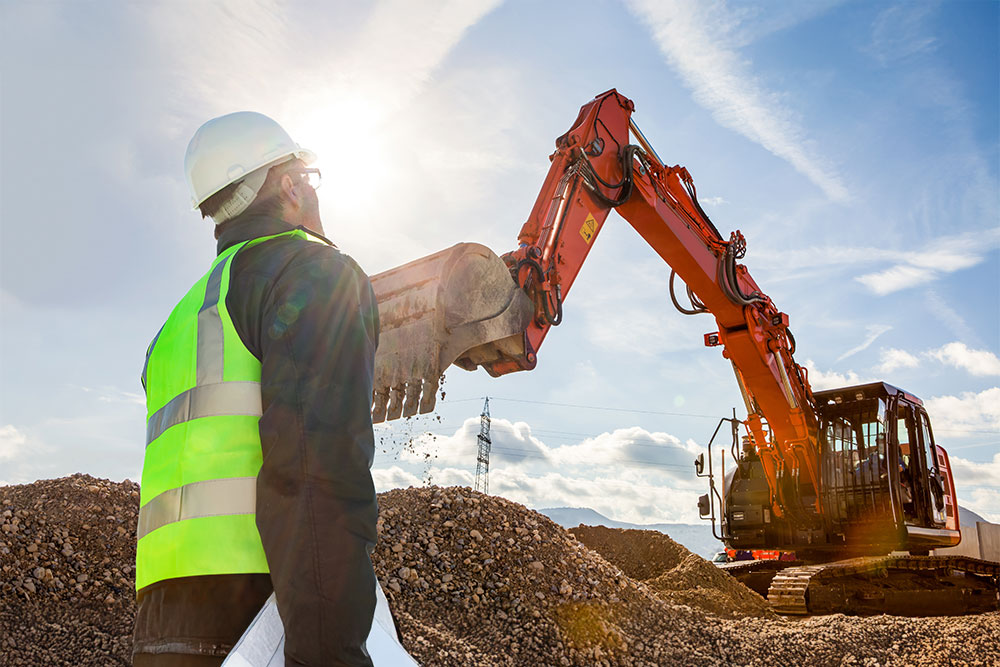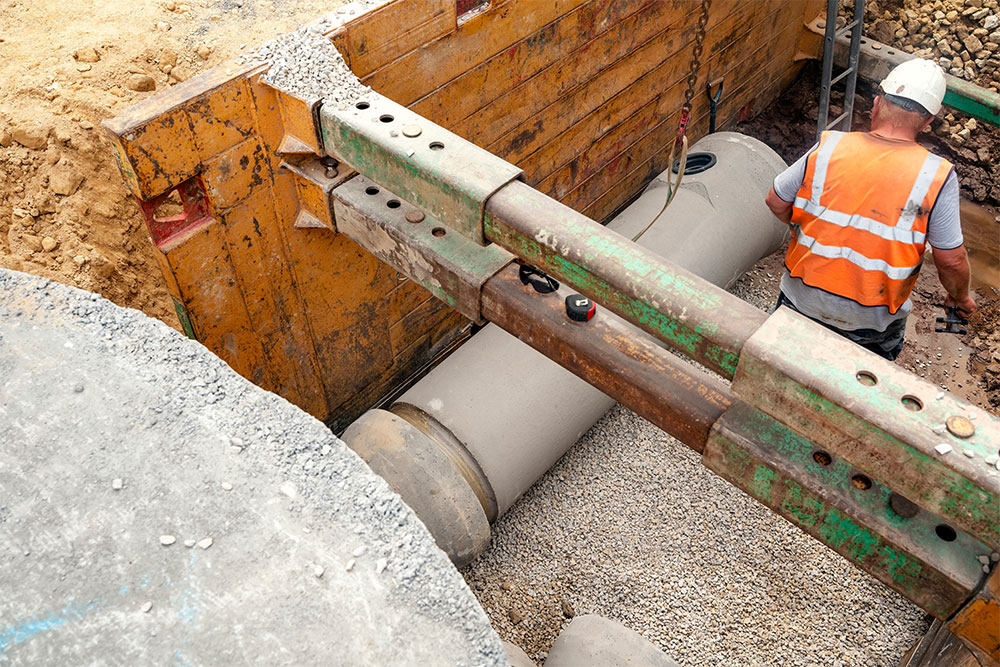
Excavations are a fundamental part of construction, essential for laying foundations, installing utilities and shaping landscapes. But these tasks come with significant risks that threaten the safety of workers and others on-site.
So, recognising excavation hazards is vital for construction workers and duty holders to ensure that groundwork is carried out safely. This blog highlights the most common excavation hazards you must be aware of.
Key Takeaways
- Excavation hazards, such as collapses, utility strikes and falling debris, must be managed to protect workers and the public.
- Duty holders have legal responsibilities under CDM 2015 to plan, supervise and implement safety measures throughout excavation work.
- Regular checks, controlled access and effective water management are essential to maintain excavation site safety.
- Proper training and competence are critical for safety, especially in high-risk tasks like working in confined spaces.
Excavation Duties
All on-site risks must be managed under the Health and Safety at Work, etc. Act 1974 (HSWA) and the Construction (Design and Management) Regulations 2015 (CDM).
The HSWA places duties on employers to ensure health and safety in all workplaces, including construction sites. CDM 2015 is specific to the construction industry but reinforces the HSWA’s overall aim of on-site safety, although this responsibility is shared among different duty holders across different project phases.
Under CDM 2015, several duty holders have responsibilities related to excavation safety:
- Clients: Provide site information, allocate resources and allow enough time for excavation work to be planned safely.
- Principal Designers: Identify excavation risks and plan how they can be eliminated or controlled before work begins.
- Principal Contractors: Develop a construction phase plan that includes safe systems for excavation and ensure workers are competent and supervised.
- Contractors: Carry out excavation work safely, implementing protective measures such as shoring, trench boxes or barriers as needed.
Principal contractors are ultimately responsible for on-site safety, but each contractor has a duty to plan and manage their work. So, if you’re carrying out groundwork, you need to know the common excavation hazards you’ll face.

Common Excavation Hazards
Excavation work presents a range of hazards that can injure or kill if not properly managed. Awareness of these hazards is critical to avoid on-site accidents.
Construction Courses
Explore our range of online Construction Training courses. Designed to support compliance and safety during construction and in occupied buildings. Courses equip workers and duty holders with essential knowledge to work safely, efficiently and in line with industry standards.
Collapsing Excavations
Soil can shift or collapse suddenly, and with a cubic metre of soil weighing over 1.5 tonnes, collapses are always dangerous. Workers hit by falling earth are at risk of severe, even fatal, injuries. Trapped workers who survive the initial impact are at high risk of asphyxiation without immediate rescue.
Confined Spaces
Excavations that create “confined spaces” must be carefully managed. Confined spaces are inherently risky, so workers entering them must be competent and able to operate safely.
Emergency rescue plans must also be in place before any work in a confined space can begin.
Falling Equipment and Debris
Materials, tools and plant equipment can fall into excavation sites, causing impact injuries. Workers below ground level can also be struck by debris from above or collapsing edges.
Falling into Excavations
Without edge protection, workers can fall into excavations. Injury risks increase with excavation depth, but there’s no fall distance considered safe. Any sudden drop can result in injury.
Flooding
Ground or surface water can flow rapidly into excavations or accumulate over time, making sides unstable and putting workers at risk of drowning.
Muddy conditions also increase the risk of workers falling into excavations.
Plant and Equipment Risks
Heavy machinery used near excavations can strike workers or cause cave-ins if operated too close to the edge.
Workers who use heavy equipment regularly are also vulnerable to musculoskeletal disorders, including hand-arm vibration syndrome (HAVS). Vibrating equipment is also loud, exposing workers to permanent hearing loss without protection.
Utility Strikes
Contact with underground cables or pipelines is a major excavation hazard. Striking live electrical cables can cause electrocution or burns, while damaged gas lines may lead to fires or explosions.
Undermining Structures
Excavations near existing buildings or structures can weaken their foundations, leading to potential collapses that endanger workers and the public.

Excavation Safety
Excavation hazards must be assessed and managed throughout the project. Safety measures must also be regularly inspected and confirmed as effective.
These steps should be followed before and during excavation work to minimise risks.
Before Work Begins
Duty holders must identify and make safe excavation hazards before digging starts. Key steps include:
- Check ground conditions: Assess the soil for stability and check for water that could weaken the ground or create flooding risks.
- Locate underground services: Use service plans and detection tools to find buried utilities like cables and pipes. But don’t rely solely on plans, as they may be out of date.
- Use supports: Put shoring, trench boxes or sloping systems in place to stop the sides from collapsing.
During Excavation Work
Conditions can change quickly, so duty holders must manage risks as work continues. Important actions include:
- Regular inspections: A competent person should check excavation supports, edges and protective measures before each workday. Checks are also needed after any events that might compromise excavation safety, like heavy rain or nearby machinery use.
- Control access: Limit access to excavation areas. Use barriers, guardrails and warning signs to prevent falls.
- Manage water levels: Keep an eye on water entering the excavation and remove it quickly to avoid flooding or instability.
Training and Competence
Everyone working on or around excavation sites must understand the risks. Workers should be trained to spot hazards and know how to respond. Only competent contractors should be trusted to detect underground services.
Site-specific inductions are also important to ensure workers understand the unique risks of each job.
Breaking Ground Training for Duty Holders
Effective training is essential to manage excavation hazards and comply with legal duties. Our online Breaking Ground in Construction for Duty Holders course equips you with the knowledge and tools needed to oversee excavation safety.
This course helps duty holders to:
- Plan and risk assess breaking ground activities
- Supervise excavation work
- Protect workers and the public from common excavation hazards
The course also includes access to a free digital checklist, which lets you document safety measures and prove that hazards have been identified and controlled.





















